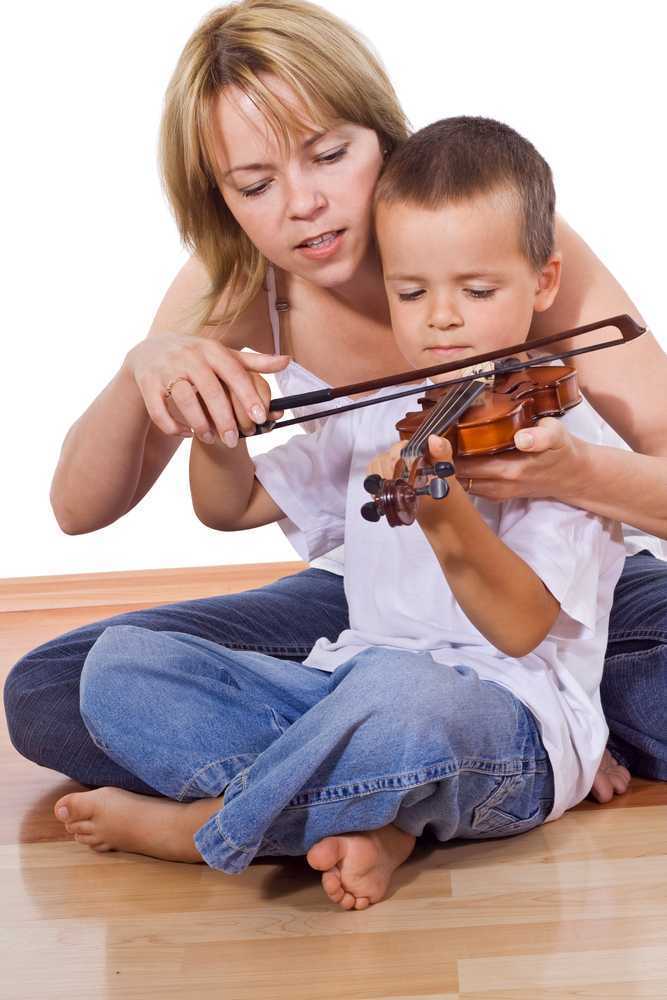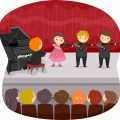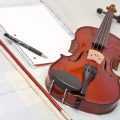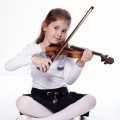When summer rolls around, something many music families and teachers look forward to is the annual Suzuki institute. Now, this may be an institute in Indiana, or in Colorado, or New York – but the idea is the same. Many different Suzuki institutes are held across the United States, Canada, and South America. Your task is to find the one that best suits your needs.
What is a Suzuki Institute?
It is an event where teachers, kids, and parents get together to really work on music. Suzuki institutes are usually one or two weeks long. You choose how long you will stay. The majority of time at a Suzuki institute is spent in attending classes, lessons, and concerts. Some institutes also include non-Suzuki courses, like juggling, fiddle, and family musicals.
a Suzuki institute is spent in attending classes, lessons, and concerts. Some institutes also include non-Suzuki courses, like juggling, fiddle, and family musicals.
For a typical Suzuki institute, your daily schedule will include: a semi-private lesson, a group class, a technique class, and something extra, like orchestra, chamber music, or rhythm appreciation. Lessons are the big deal – this is where the most hands-on learning occurs. And this is your best opportunity to see how a different teacher tackles concepts like tone, posture, and intonation. There’s nothing like hearing old information in a new way, or to have it finally make sense!
Some institutes are heavy into the Suzuki music part of the scene. For example, at the American Suzuki Institute in Stevens Point, Wisconsin, you’ll have lessons, classes, orchestra/rhythm class, and technique. You will also be able to attend nightly concerts, recitals, lectures, and the gala festival concert at the end of the week. Student musicians are always practicing somewhere! (And you’ll find the teachers performing on concerts, too!)
What Experiences Will You Have?
Be prepared for some good one-on-one work with an expert on your instrument. Instructors for institutes come from all over the world. During a semi-private lesson, your child will be in a group of two to four students of approximately the same book level. The teacher divides the time so that each student gets a separate lesson every day. The attending caregiver takes notes, getting down all the information that comes from a packed-in power lesson. Can it be intense? Yes, but it’s always worth the time. The teacher is always working to help your child reach his or her personal best. It’s not a competition with the other kids in the group, it’s an experience in learning and personal achievement.
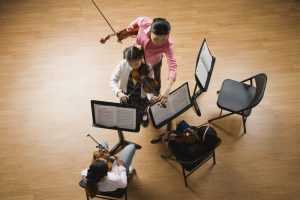 During group class, the instructor leads the kids in playing different repertoire pieces – usually as preparation for the final concert at the end of the week. The group class is also a fun time to play through familiar pieces, or, for some students, to listen to pieces they haven’t reached yet and just itch for a chance to try the next one in the book. Group class is when some teachers are really creative: can you ‘name that tune’ from the book when the teacher just plays the opening notes? Or what about the penny on the shoe trick? Balance the pennies on your shoes (bare feet don’t count!) to the end of the piece and you keep the money. Each exercise helps the students improve their musical ability. And kids remember the contests for years – and want to do them again at the home program.
During group class, the instructor leads the kids in playing different repertoire pieces – usually as preparation for the final concert at the end of the week. The group class is also a fun time to play through familiar pieces, or, for some students, to listen to pieces they haven’t reached yet and just itch for a chance to try the next one in the book. Group class is when some teachers are really creative: can you ‘name that tune’ from the book when the teacher just plays the opening notes? Or what about the penny on the shoe trick? Balance the pennies on your shoes (bare feet don’t count!) to the end of the piece and you keep the money. Each exercise helps the students improve their musical ability. And kids remember the contests for years – and want to do them again at the home program.
Technique class is where you get down to the nuts and bolts of tone and posture. Some of the best teachers have a ‘composer moment’ where the kids give mini reports on particular composers they have been assigned to look up. Or perhaps you’ll be all standing around, counting the rhythm of your music out loud as you play (tricky for violins and pianists alike!) Or maybe you do some sight reading of a piece and learn all about the dynamics and nuances of the work. It’s up to the teacher, and every institute class will be unique.
If you have a child who is fairly young (i.e. not reading music yet), then you’ll probably be assigned to a movement class. This takes place in a large, gym-like area, and it involves getting kids to move in rhythm to the music. Maybe you clap tempos, or use different rhythm instruments to get the beat going. Some teachers like to incorporate dances, others do sit-down things, sometimes with the parents doing the work with the child.
For students who are able to read music, there will probably be an orchestra or chamber music class. (Duet class is how pianists do ensemble work.) Early music readers go to the easier-to-read classes, more advanced readers have harder music. The instructor is there to be the conductor and guide. Flashcards with music symbols (what is this? A half rest, right!) or opportunities to learn good orchestral behavior (Feet flat on the floor – or on your violin case, if you can’t reach the floor!) are all part of the experience. Concertmaster, tuning pitch, the difference between 4/4 and ¾ tempos and the baton is usually covered, too.
Who Can Come?
Suzuki institutes are for people of all ages. Do you have a little one, just starting to get into the “Pre-Twinkle” program? Sign right up. Just be prepared to have the teacher trainees say “aww!” when the pre-Twinklers come to the final recital and they (and their parents) demonstrate good posture setup. It is seriously cute.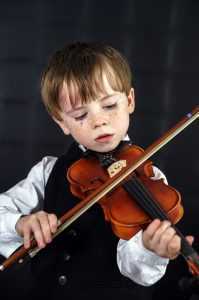
Have someone who can play up to Book 5? You’ll fit right in. This is the point where some teachers have their students learn material that is outside of the Suzuki repertoire books – and it is inspiring to hear what other lovely music is out there.
Maybe you have an advanced student – say Book 8 or 10? Some institutes have programs that accommodate this level of playing – although it is common to put advanced students in a chamber music section of the Suzuki institute. Chamber music programs are more autonomous, sometimes teen-only. And they are more work, very focused on rehearsal and practice. Parents are welcome to come along, but some families like to just send their teen by him or herself to the chamber music program.
Oh, and teacher training – if you are interested in becoming a Suzuki teacher, Suzuki institutes are the place to pick up your training, book by book. You can also sign up to get some college credit, if your degree program accepts outside credits. Teacher trainees NEED to bring their own instruments and books, as these are paramount to their lecture sessions. Teacher trainees also do a lot of observations of students in class, so you want to bring plenty of writing materials. The teacher trainer checks through these frequently.
What about Parents?
When you have small children at an institute, it’s especially important to have both parents attend, if at all possible. Someone needs to be at every lesson and class to take notes and to help out. It is safer to leave the violin with Dad than to leave it on the floor to be accidentally kicked when the child returns to his spot with a flash card or rhythm clicker. And when Mom can see what is going on in the lesson, it makes practice sessions easier.
 When parents attend an institute, they get to know who the teachers are and why they teach the way they do. If Dad has a technique query, the teacher is ready and willing to answer. Or if Mom is interested in learning more about something, the teacher can usually recommend an expert or other source of quality information.
When parents attend an institute, they get to know who the teachers are and why they teach the way they do. If Dad has a technique query, the teacher is ready and willing to answer. Or if Mom is interested in learning more about something, the teacher can usually recommend an expert or other source of quality information.
And, face it: the parents are the schedule keepers. Class here, room there – the kids get fed, get practiced, and get to class on time. Is it hectic? Sure. But it’s a fantastic bonding time, when you can really see your kids develop and grow as musicians and as people.
Can other siblings attend the same Suzuki institute? Definitely. Some families are into the Suzuki thing the whole way – all the siblings play a musical instrument, so there are plenty of lessons and classes to attend. If you have more than one child in attendance at an institute, the more caregivers you have along, the better. It becomes a race to see who will get to this private lesson at that time, or who can take the kids to the pool while Mom is attending the lecture after classes. Scheduling is super important – so bring your planner and thinking cap.
Scheduling and Instrument-Specific Institutes
If you’re in a situation where you have two (or more) private lessons for your kids at the same time, talk to the Suzuki institute director. He or she is usually more than happy to try to switch 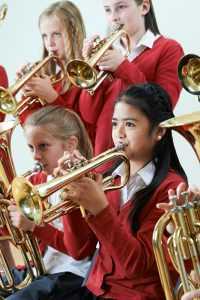 around one of the lessons, so that you can attend them both. Or you can talk to the private lesson instructor yourself, and he may change the schedule so that you can attend at least some of the private lessons for both children. The parent is the home teacher in the Suzuki method, so it is super important for you to be able to make it to the lessons to see what is actually happening there.
around one of the lessons, so that you can attend them both. Or you can talk to the private lesson instructor yourself, and he may change the schedule so that you can attend at least some of the private lessons for both children. The parent is the home teacher in the Suzuki method, so it is super important for you to be able to make it to the lessons to see what is actually happening there.
When you choose a Suzuki institute, make sure that you’re picking the correct one for your instrument. There are flute-only, double-bass only, and some guitar-only institutes out there, to name a few. That’s wonderful. But you don’t want to send in your reservation and payment and then find out you’re in the wrong one! Many Suzuki institutes offer instruction for more than one instrument, so look for the right one that will meet all your needs.
Where Are the Institutes?
Some families like to attend an institute based on its location. This becomes a vacation adventure for them every year. Maybe this time they go to Falls Church, Virginia, and next year they will be in Washington State. Fine. If you live in Indiana and only want to go to something close, you might consider the Suzuki institute in Chicago, or at Indianapolis. Some states have more than one Suzuki institute. So just hunt around. You’ll find something that works.
Accommodations: Where Do You Stay?
It varies by the institute. In Colorado, you can have access to hotels (think: ski resorts) at summertime prices. If your institute is at a university, there will probably be dorm rooms or student housing. And if your institute is in a place that has no attached housing, then you can stay at a hotel, camp ground, or friend’s house.
The nice thing about staying on the same campus as the Suzuki institute is that there is usually a meal plan that you can purchase. This makes choosing dinner or grabbing time for breakfast easier. But if there is no meal plan, the institute directors should have a list of restaurants and eateries – check for special Suzuki discounts.
What to Bring

When you plan for a Suzuki institute, bring your instrument, any music books you are using, and the recordings of your music that you are studying. Also, bring a device for recording – sometimes, the teacher will ask you to videotape what she does, so you can play it back during a practice session. Sometimes, you’ll want to shoot a video of something your son has finally mastered. Or maybe your daughter will find it more interesting to record herself playing something eight times, to prove that she did it correctly.
Last Thing to Remember
When considering a Suzuki institute, remember: it is a learning experience. Think of it as an opportunity to learn from teachers that are highly experienced in your field. This is a time of major encouragement, too, as you’ll see other families who are doing the same things you are, and who are succeeding, too. You will see good practice habits, learn a new technique or two, and maybe come away inspired by some great piece you heard. Suzuki teachers are taught that “Every Child Can!” And when you come to an institute, you see that principle come to life.




